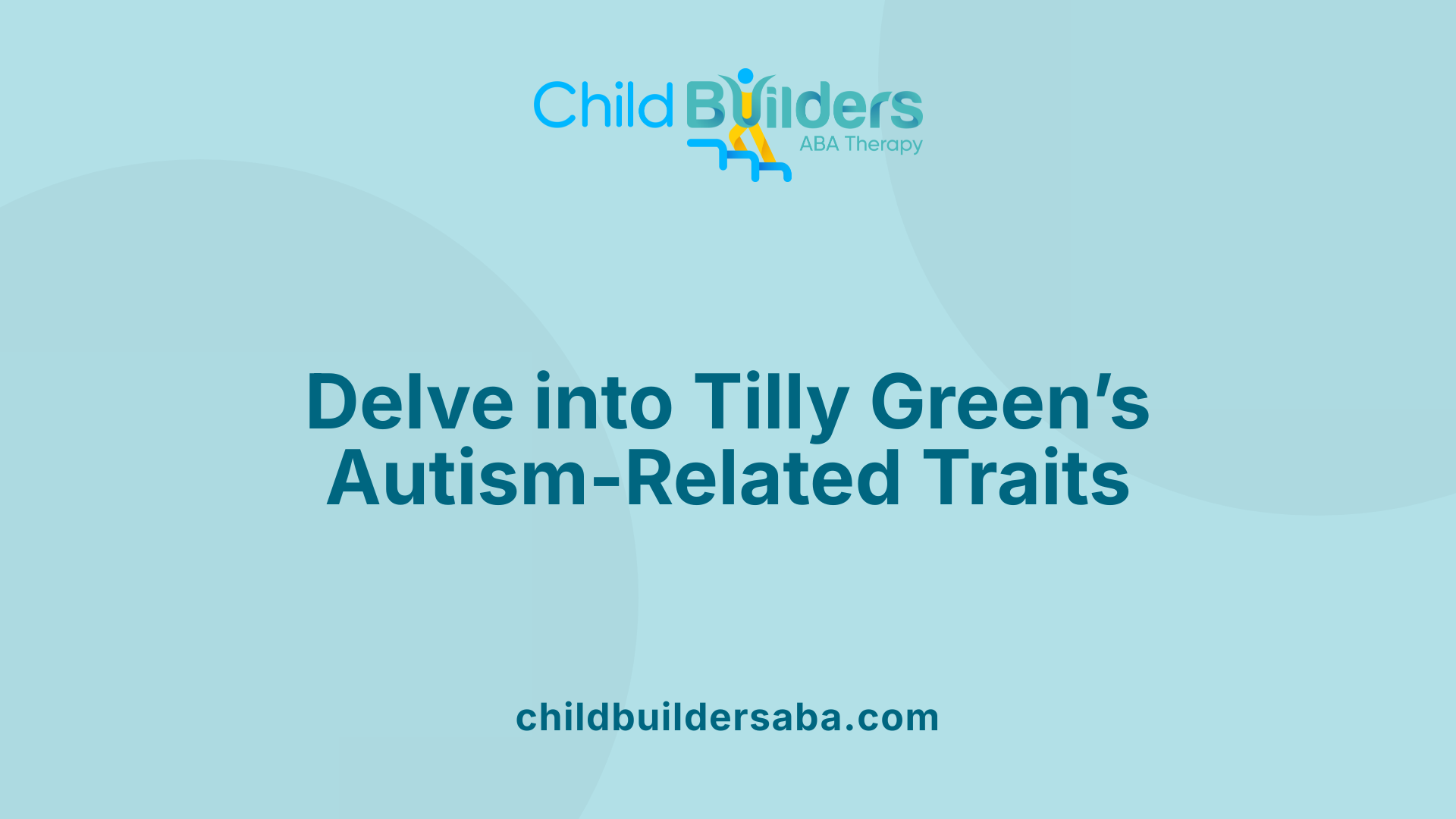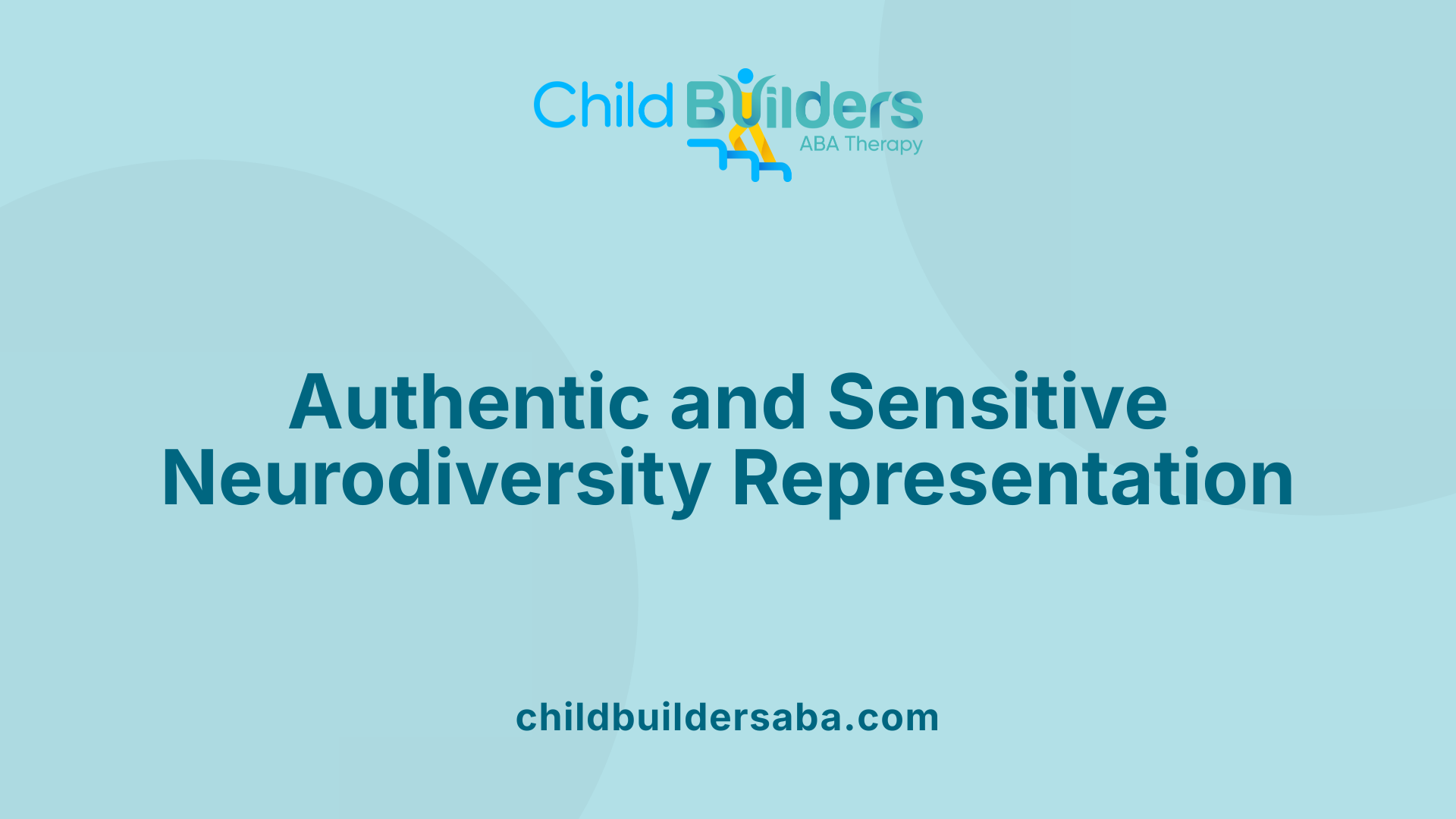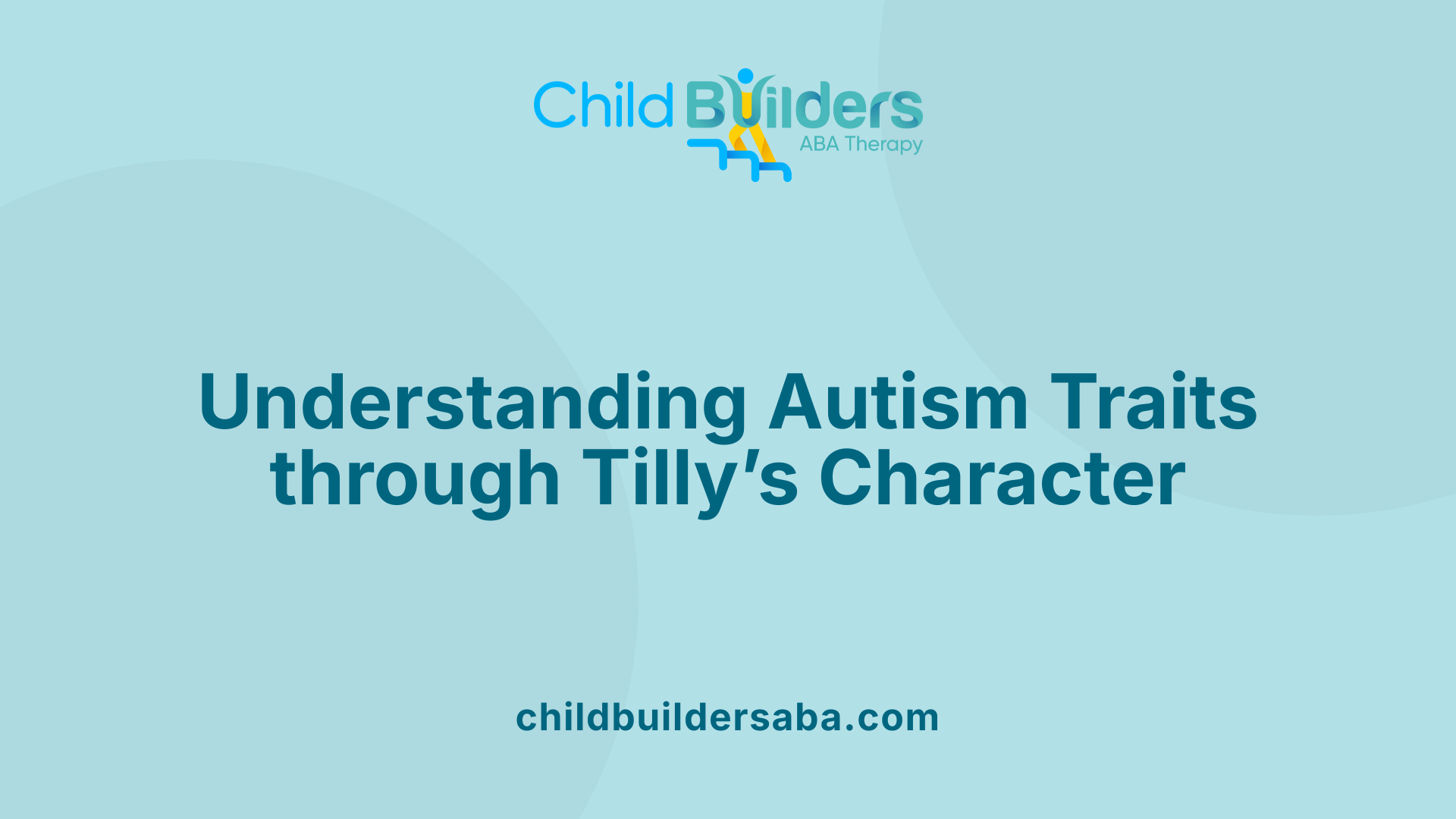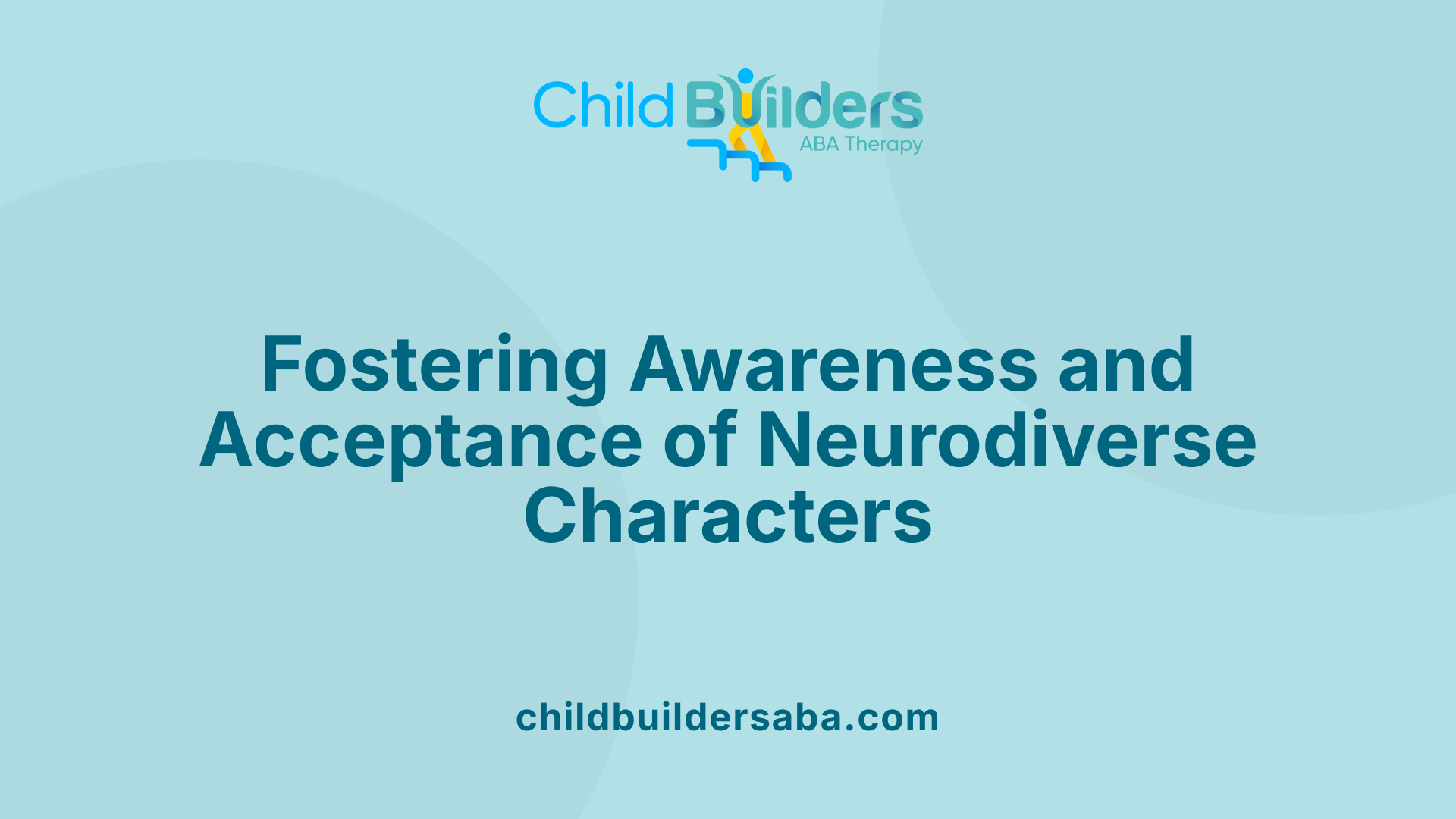Does Tilly Green Have Autism?

Introduction: Understanding Tilly Green’s Character
The animated series 'Big City Greens' features Tilly Green as one of its central characters, often drawing attention not only for her adventurous spirit but also for her distinctive behavioral traits. Fans and critics alike have debated whether her characteristics reflect those of autism spectrum disorder (ASD). This article delves into Tilly Green’s traits, behaviors, and the show's portrayal to assess the likelihood of her being on the autism spectrum, while also exploring broader implications of autism depiction in media.
Tilly Green’s Behavioral Characteristics and Traits

What traits and behaviors does Tilly Green exhibit that are related to autism?
Tilly Green displays several behavioral traits commonly associated with autism spectrum disorder (ASD). She often appears aloof and is prone to flights of fancy, showing a tendency to be somewhat oblivious to her surroundings. These behaviors can be interpreted as signs of sensory sensitivities or social challenges often seen in individuals on the spectrum.
Her behavior includes being highly intelligent and strong-willed, with a preference for routines and familiarity. She tends to focus intensely on her interests, particularly animals and arts, which demonstrates her capacity for deep concentration and passion in specific areas. Additionally, Tilly communicates in unique ways, including signing, which highlights different modes of expression that many autistic individuals find helpful.
Overall, her social difficulties, repetitive behaviors, and intense interests collectively suggest traits that are aligned with autism spectrum disorder, illustrating a multifaceted personality that extends beyond her neurodivergence.
How is autism spectrum disorder depicted through the character of Tilly Green?
In 'Big City Greens,' Tilly Green’s character serves as a realistic portrayal of some autism spectrum traits. Her aloofness, combined with her tendency to retreat into her own world or flights of fancy, captures how some autistic individuals may respond to overstimulation or social environments.
Her distant and sometimes antisocial behavior reflects typical social challenges, such as difficulty understanding social cues or engaging in typical peer interactions. Despite these challenges, the show emphasizes that her behavior does not define her entirely. Instead, her talents, passions, and personality shine through, presenting a rounded picture.
The creators collaborated with experts to ensure an authentic representation, making Tilly’s character a valuable example of neurodiversity. While her traits are portrayed with sensitivity and nuance, they also serve to promote awareness and acceptance of autism. This depiction helps viewers understand that autism is just one aspect of an individual's identity, enriching the narrative of neurodiverse characters in media.
Key Traits and Behaviors of Tilly Green in Context
| Trait/Behavior | Description | Autism Connection |
|---|---|---|
| Aloofness and flights of fancy | Tends to isolate herself mentally, sometimes unaware of surroundings | Common in ASD, sensory sensitivities |
| Social difficulties | Struggles with social cues, forms unique relationships | Typical social challenges in ASD |
| Repetitive behaviors | Engages in routines and specific interests | Repetition and routines are hallmark ASD traits |
| Intense interests | Focused on animals and arts, deep concentration | Deep interests are often observed in autistic individuals |
| Communication style | Uses signing and other non-verbal methods | Alternative communication methods frequently assist those on the spectrum |
| Sensory sensitivities | Exhibits heightened responses to sensory input | Reflects common sensory processing differences |
Additional Insights about Autism Traits in 'Big City Greens'
The show’s portrayal of Tilly has been praised for its authenticity and sensitivity. It highlights that neurodivergence is just one part of a person’s overall identity. The creators emphasized that these traits do not solely define her, instead showcasing her talents, personality, and growth.
Furthermore, the series’ approach opens conversations about autism and neurodiversity among its viewers, encouraging understanding and acceptance. By presenting a character like Tilly with depth and nuance, 'Big City Greens' expands the spectrum of representations of children with unique developmental profiles.
| Character Trait | Autism Spectrum Connection | Representation Significance |
|---|---|---|
| Aloof and flights of fancy | Social withdrawal, sensory overloads | Adds depth to neurodiverse character portrayal |
| Focused interests | Special interests, deep concentration | Promotes understanding of passionate pursuits |
| Communication methods | Sign language, non-verbal cues | Highlights alternative communication modes |
| Routine behaviors | Need for predictability, routines | Demonstrates comfort in stability |
The Show’s Approach to Neurodiversity

Creators’ Collaboration with Experts
The creators of 'Big City Greens' made a conscious effort to depict their characters authentically by collaborating with experts in neurodiversity. These professionals helped in shaping characters like Tilly and Cricket to ensure their traits are portrayed realistically and sensitively. This partnership aimed to provide viewers with a nuanced understanding of neurodivergent traits, moving beyond stereotypes.
Representation of Neurodiverse Traits as Part of Character Complexity
Tilly Green is depicted with a variety of traits often associated with autism spectrum disorder (ASD), though it has not been officially confirmed that she has autism. Observers note her high intelligence, literal-mindedness, sensory sensitivities, and special interests in animals and arts. She also uses unique communication methods such as signing.
Cricket, her brother, displays behaviors aligned with ADHD, including hyperactivity, impulsiveness, and difficulty focusing, combined with a love for physical activities. These traits are seamlessly integrated into their characters, showing that neurodivergent traits are just one aspect of their personalities, not the whole identity.
Impact on Audience Understanding and Acceptance
By showcasing characters with diverse neurodiverse traits, the show promotes acceptance and understanding among its viewers. It demystifies behaviors that might seem different or unusual to some and promotes empathy. Audience members, especially children, learn that neurodiversity is a natural part of human variation.
The characters’ authenticity in representing neurodivergence helps foster a more inclusive perspective, encouraging acceptance of differences in real life. This portrayal supports the broader movement toward understanding neurodiversity as a vital aspect of individual identity.
| Character | Traits | Behaviors | Communication | Representation Focus |
|---|---|---|---|---|
| Tilly Green | Highly intelligent, literal-minded, sensory sensitivities, strong interests in animals & arts | Aloof, oblivious, flights of fancy, unique interests | Sign language, non-verbal cues | Autism spectrum traits and her multifaceted personality |
| Cricket Green | Hyperactive, impulsive, easily distracted, love for physical activity | Hyperactivity, impulsiveness, focus challenges | Verbal, energetic communication | ADHD traits plus physical engagement |
Traits, Interests, and Communication Styles in Tilly

What traits and behaviors does Tilly Green exhibit that are related to autism?
Tilly Green displays several characteristics commonly associated with autism spectrum disorder. Her social interactions often appear atypical; she can be aloof, which means she might be distant or seem disconnected from those around her. Tilly also tends to have intense interests, particularly in animals and arts, which she explores with deep focus and passion. These strong interests often help her find comfort and stability amidst her environment.
She demonstrates sensory sensitivities, reacting strongly to sounds, textures, or lights that others might overlook. Her communication style is also unique; she often engages in signing, a form of visual language, which can be an alternative way to express herself when spoken words may be overwhelming or insufficient.
Furthermore, Tilly can be literal-minded, meaning she interprets language very literally, which occasionally leads to misunderstandings but also highlights her precise thinking. Her behaviors, such as repetitive routines or routines that help her feel secure, align with common autism traits. Overall, these observations suggest that Tilly exhibits a developmental profile consistent with many features found in individuals on the autism spectrum.
How is autism spectrum disorder depicted through the character of Tilly Green?
The character of Tilly Green from ‘Big City Greens’ embodies traits that many associate with autism spectrum disorder. Her aloof demeanor and tendency toward flights of fancy highlight her unique way of perceiving and interacting with the world. She often appears oblivious to her surroundings or social cues, which reflects common experiences for some on the spectrum.
Her behavior of retreating into her interests and routines provides her with comfort, illustrating how familiar patterns serve as anchors for many autistic individuals. Her antisocial and distant interactions are portrayed as part of her personality rather than solely symptoms, emphasizing her individuality.
The creators of the show collaborated with experts to craft Tilly’s character, ensuring that her neurodivergent traits are portrayed authentically and respectfully. This approach aims to normalize neurodiversity, emphasizing that traits such as intense interests or unique communication styles are integral to who she is, rather than anomalies.
While the show has not explicitly diagnosed Tilly with autism, her characteristics have sparked discussions about autism representation in media. She serves as a creative example that fosters understanding by depicting a character with a rich, nuanced personality that includes her neurodivergent traits. This depiction helps nurture awareness, acceptance, and empathy among viewers.
Traits and Interests
| Trait/Interest | Description | Additional Details |
|---|---|---|
| High intelligence levels | Tilly is highly smart and has a sharp mind, often understanding complex concepts quickly | Her love for arts and animals showcases her intellectual curiosity |
| Literal-mindedness | She interprets language very literally, which influences her communication style | Her literal perspective can lead to humorous or insightful moments |
| Sensory sensitivities | She reacts strongly to sensory stimuli, such as sounds, textures, or lights | This trait can make certain environments overwhelming for her |
| Specific interests | Tilly is deeply interested in animals and art | Her passion for these subjects influences her hobbies and conversations |
| Communication methods | She uses signing to communicate, an alternative to spoken language | Sign language helps her express herself more comfortably |
Additional Insights on Tilly’s Traits and Autism Representation
| Aspect | Explanation | Relevance in Show |
|---|---|---|
| Autism traits portrayal | Tilly’s aloofness, intense interests, and sensory sensitivities resemble autism spectrum features | Adds depth to her character and promotes awareness |
| Communication differences | Use of signing and literal interpretation exemplify adaptive communication styles | Highlights diverse ways of effective communication |
| Impact on viewers | Her character encourages understanding and acceptance of neurodiverse individuals | Advances positive representation in media |
Media Representation and Public Perception

Does Tilly Green have autism?
Based on the available information, Tilly Green is on the autism spectrum. She exhibits traits commonly associated with autism, such as acting aloof, engaging in flights of fancy, and appearing oblivious to her surroundings. Her antisocial and distant behavior further align with behaviors often observed in individuals with autism. Therefore, it is accurate to say that Tilly Green has autism. However, unless officially confirmed by a medical professional, this remains an observation based on her traits and behaviors.
Fans’ interpretations and discussions
Fans of 'Big City Greens' have embraced Tilly’s character as a positive representation of neurodiversity. Many viewers interpret her behaviors—her aloofness, sensory sensitivities, and strong interests in animals and arts—as authentic depictions of autism. Discussions online often highlight how relatable her traits can be for individuals on the spectrum or those who have loved ones who are.
Similarly, Cricket's energetic and impulsive behaviors are seen as reflective of ADHD traits. Fans appreciate how the show illustrates that neurodivergence can be part of a multifaceted personality, emphasizing strengths and unique perspectives.
Impact of realistic portrayals in children's media
The show’s creators worked closely with experts to ensure that the characters of Tilly and Cricket are portrayed with authenticity. This approach helps foster greater understanding and acceptance among young viewers, promoting empathy for neurodiverse individuals.
Realistic portrayals such as these can help reduce stigma and misconceptions. When children see characters that mirror real-life diversity, it encourages inclusion and broadens perspectives, fostering more accepting attitudes.
Challenges of diagnosis and confirmation
Identifying neurodivergence in animated characters can be complex. Observers may notice traits that resemble autism or ADHD, but professional diagnosis requires comprehensive, clinical evaluation.
In the case of Tilly, her traits align with autism spectrum disorder, but without an official diagnosis, her condition remains an interpretation based on observed behaviors.
Media portrayals often walk a fine line, aiming to educate without oversimplifying. Authentic representations rely on collaboration with experts to accurately depict the nuances of autism and other conditions.
| Character | Traits | Depicted Behaviors | Related Neurodiversity |
|---|---|---|---|
| Tilly Green | Highly intelligent, literal, sensory sensitivities, interests in animals and arts | Aloofness, flights of fancy, unique communication methods like signing | Autism Spectrum Disorder |
| Cricket Green | Hyperactive, impulsive, enjoys physical activities | Difficulty focusing, impulsivity, hyperactivity | ADHD |
Understanding these character traits helps viewers recognize the diversity within neurodivergence, promoting dialogue and awareness in broader society.
Summary: Understanding and Respecting Media Characters with Autism Traits

Recognizing the spectrum of traits and behaviors
Characters like Tilly Green from the show 'Big City Greens' illustrate a variety of traits often associated with autism spectrum disorder (ASD). Tilly exhibits behaviors that include being highly intelligent and literal-minded, which are common among individuals on the spectrum. She also shows sensory sensitivities and has a deep interest in animals and arts, often engaging in unique communication styles such as signing.
Meanwhile, her brother Cricket displays traits associated with ADHD, like hyperactivity, impulsiveness, and difficulty focusing. These portrayals help illustrate the diversity of neurodivergent experiences, highlighting that behaviors such as social withdrawal or intense interests aren’t confined to a single condition but can appear across a broad spectrum.
Importance of official diagnoses and confirmation
While Tilly's traits align with characteristics often associated with autism, it is crucial to note that there has been no official confirmation or diagnosis mentioned publicly. Fans and observers may interpret her behaviors as indicative of autism, but without credible or formal statements from creators or medical professionals, these remain speculative ideas.
It is vital to approach such character analyses thoughtfully, recognizing that autism is a complex and nuanced spectrum. Confirming a diagnosis requires comprehensive assessment by qualified professionals. Consequently, any assumptions about Tilly's autism status should be treated with caution, emphasizing respect for individuals' privacy and identity.
Role of media in raising awareness and fostering acceptance
The portrayal of characters like Tilly and Cricket in 'Big City Greens' plays a significant role in increasing awareness about neurodivergence. The show's creators collaborated with experts to ensure that their characters' traits are depicted authentically and responsibly. By doing so, they promote a positive and inclusive message, showing that neurodivergent individuals are multifaceted and capable of diverse and rich personalities.
Media representations can influence public understanding profoundly. When done accurately, they foster empathy, reduce stigma, and encourage acceptance.
| Aspect | Character Traits | Associated Condition | Additional Insights |
|---|---|---|---|
| Tilly Green | Literal-minded, sensory sensitivities, strong interests in arts and animals, signing | Often linked to autism spectrum disorder | Traits are part of her multifaceted personality; confirmation of diagnosis is lacking |
| Cricket Green | Hyperactivity, impulsiveness, difficulty focusing, physical activity enjoyment | Traits associated with ADHD | Shows a different aspect of neurodiversity, emphasizing varied experiences |
| Overall Impact | Authentic portrayal and awareness | Spreads understanding and acceptance | Notably, characters are meant to educate and represent neurodiverse individuals positively |
Understanding these characters helps normalize neurodiversity in mainstream media. Their nuanced portrayal underscores the importance of respectful and accurate representation, ultimately fostering a more inclusive society.
Final Thoughts: The Significance of Inclusive Representation
While it remains unconfirmed whether Tilly Green has autism, her character highlights important aspects of neurodiversity. Media portrayals that thoughtfully include autistic traits can foster greater understanding and acceptance among audiences. Whether or not she is officially diagnosed, Tilly's depiction serves as a valuable reminder that neurodiversity is a natural and enriching part of human variation, deserving respectful recognition.





































































































